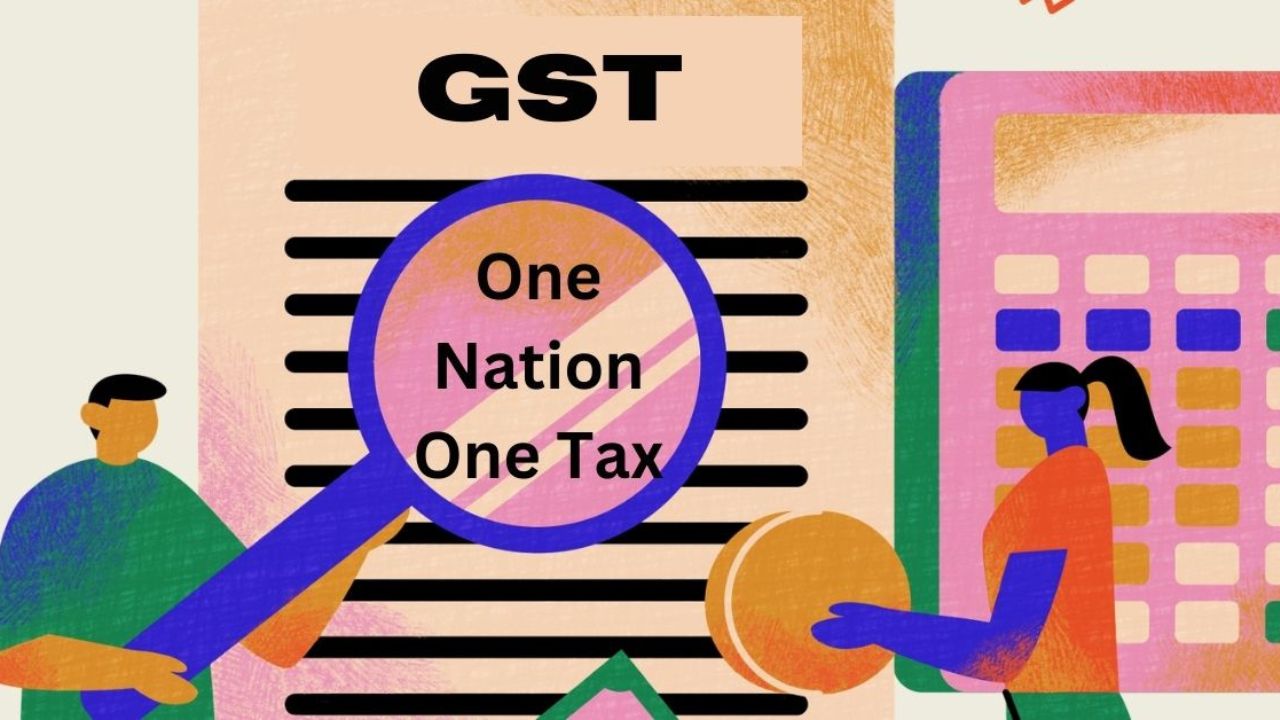For decades, India’s indirect tax system was a notoriously complex web. Imagine a single product being taxed multiple times by different authorities before it reached you. There was Central Excise, Service Tax, Value Added Tax (VAT), Octroi, and a dozen other levies. This not only created a nightmare of paperwork for businesses but also led to a “tax on tax” effect, making goods and services more expensive for the final consumer.
To sweep away this complexity and create a truly unified national market, the Government of India introduced the Goods and Services Tax (GST) on July 1, 2017. This wasn’t just a minor tweak; it was the biggest and most ambitious tax reform in the nation’s history, built on the powerful vision of “One Nation, One Tax, One Market.” 🇮🇳
What is GST? The Big Idea
- Full Name: Goods and Services Tax
- Launched: July 1, 2017
- The Core Concept: GST is a single, comprehensive tax that is levied on the supply of goods and services. It replaces almost all of the previous central and state-level indirect taxes.
Crucially, GST is a destination-based consumption tax. This is a big shift. It means the tax revenue goes to the state where the goods or services are consumed, not the state where they are produced. This creates a more equitable system for all states.
The Structure of GST: CGST, SGST, and IGST Explained
While it’s called “one tax,” GST has three main components to accommodate India’s federal structure. It’s actually quite simple once you get the hang of it.
For Sales Within the Same State (Intra-State)
When a transaction happens within a single state (e.g., a seller in Mumbai sells to a buyer in Pune), the GST is split into two equal parts:
- CGST (Central GST): The tax revenue goes to the Central Government.
- SGST (State GST): The tax revenue goes to the State Government. For example, if a product has an 18% GST rate, the invoice will show 9% CGST and 9% SGST.
For Sales Between Two States (Inter-State)
When a transaction happens across state borders (e.g., a seller in Bengaluru sells to a buyer in Delhi), only one tax is charged:
- IGST (Integrated GST): This single tax is collected by the Central Government, which then passes on the SGST portion to the destination state. In this case, the invoice would simply show 18% IGST.
This clever structure ensures a seamless flow of tax revenue between the Centre and the States. The tax rates are decided in different slabs (like 0%, 5%, 12%, 18%, and 28%) for different categories of goods and services.
Benefits of the GST Regime
The shift to GST has brought significant advantages for everyone.
For Consumers:
- No More “Tax on Tax”: The biggest benefit is the elimination of the cascading tax effect. This has helped in reducing the final price of many products.
- Transparent Pricing: You can now see the tax component clearly on your bill, leading to greater transparency.
For Businesses:
- Simplified Compliance: It replaces the need to file multiple tax returns with different authorities with a single, unified digital return.
- Seamless Input Tax Credit (ITC): This is a game-changer. Businesses can now claim a credit for the GST they paid on their raw materials and services (inputs). This credit reduces their final tax liability, lowering the cost of business.
- A True National Market: By removing tax barriers and checkposts at state borders, GST has made the movement of goods across the country much faster and cheaper.
For the Government:
- Wider Tax Base: The simplified and digital nature of the system has encouraged millions of small businesses to enter the formal tax net.
- Improved Efficiency: The centralized digital platform, the GST Network (GSTN), makes it easier to track transactions and harder for people to evade taxes.
The Human Touch: A Small Business Grows
Rajesh runs a small electronics shop in Noida, Uttar Pradesh. Before GST, if he wanted to buy goods from a supplier in Gujarat, the process was complicated. He had to deal with Central Sales Tax, entry forms, and his trucks would often be stuck for hours at state border checkposts.
With the introduction of GST, his business has been transformed. Now, the transaction with his Gujarat supplier is a simple inter-state purchase under IGST. The checkposts are gone, so his goods arrive two days faster. Most importantly, he can claim Input Tax Credit on the IGST he paid for his purchases, which directly reduces his tax outgo when he sells a product to a local customer. This new efficiency and cost-saving have allowed him to lower his prices slightly and expand his business by reaching customers in other states through e-commerce.
Challenges of the GST Journey
A reform of this magnitude was bound to have challenges.
- Initial Hiccups: The initial rollout saw several technical glitches with the GSTN portal and frequent changes in rules, which caused confusion for businesses.
- Complexity for Small Businesses: For very small businesses with no digital literacy, the requirement of regular online filings was initially a major hurdle.
- Multiple Tax Slabs: Critics argue that having five different tax slabs is too complex and goes against the ideal of a true “single tax.”
Conclusion
The Goods and Services Tax (GST) is a landmark structural reform that has fundamentally redefined India’s economic landscape. It has replaced a fragmented, inefficient, and complex indirect tax system with a more transparent, unified, and technology-driven one. While the journey of simplification and rationalization is still ongoing, GST has been a crucial and successful step in creating a true common market, boosting the ease of doing business, and building a more formalized and competitive Indian economy.
